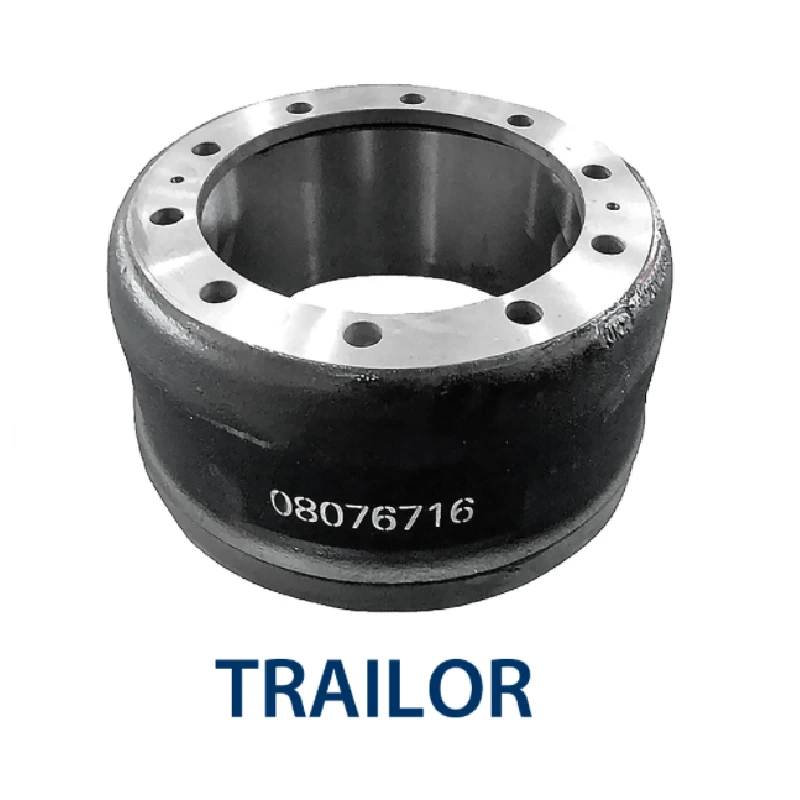Dec . 06, 2024 04:54 Back to list
when to change brake drums
When to Change Brake Drums A Comprehensive Guide
Brake drums are an essential component of a vehicle's braking system, particularly in older models and certain types of trucks. Unlike disc brakes, which are more common in modern vehicles, drum brakes consist of a round drum encased over the brake shoes. Understanding when to change brake drums is crucial for maintaining vehicle safety and performance.
First and foremost, it’s essential to recognize the primary signs indicating that replacement of brake drums may be necessary. One of the most noticeable symptoms is a change in braking performance. If you experience a decrease in stopping power or a sensation of the brake pedal feeling spongy, it could suggest that your brake drums are not functioning correctly. This might not solely be a drum issue but can indicate problems with the entire braking system. However, the drums can often be a contributing factor.
Another common sign of wear and the need for replacement is an unusual noise when braking. If you hear a grinding or scraping sound, it may signal that the brake shoes are worn down and making direct contact with the drum. This can cause significant damage to both the drums and the shoes if not addressed promptly. In some cases, you may notice vibrations or pulsations in the brake pedal while braking, which can also indicate drum issues.
Heat is another critical factor to consider. Brake systems generate heat as they work to slow down the vehicle, but excess heat can lead to brake fade, where the brakes become less effective due to high temperatures. If your brake drums are overheating, they can warp or wear down unevenly, necessitating their replacement. A careful inspection of the drums for signs of heat damage, such as discoloration or warping, is essential, especially if you frequently drive in stop-and-go traffic or tow heavy loads.
when to change brake drums

The frequency of brake drum replacements can also depend on several factors, including driving habits, vehicle type, and environmental conditions. For instance, vehicles used in heavy-duty applications or those subjected to frequent heavy braking will require more frequent inspection and potential replacement. As a general guideline, it's advisable to inspect brake drums at every brake service. This regular maintenance can help identify wear before it becomes a safety concern.
In addition to visual and auditory signs, it’s crucial to pay attention to the thickness of the drum. Brake drums should be measured periodically, and if the lining has worn down beyond the manufacturer’s specified thickness, replacement is necessary. Most automotive service centers provide measurements for drum thickness, ensuring that you comply with safety standards.
Finally, when replacing brake drums, it's advisable to also replace the brake shoes to ensure optimal performance and longevity. The new shoes will work more effectively with new drums, providing better overall braking efficiency and helping to avoid premature wear.
In conclusion, recognizing when to change brake drums involves being attentive to your vehicle’s braking performance, listening for unusual noises, monitoring for overheating, and considering driving conditions. Regular inspections and maintenance are vital to ensuring your brake system functions effectively. Prioritizing brake drum health not only enhances your vehicle's performance but, more importantly, keeps you and other road users safe. If in doubt, consult with a qualified mechanic who can provide expert advice and service tailored to your vehicle's needs.
-
Scania Brake Drums: OEM Quality for Optimal Safety & Durability
NewsAug.16,2025
-
R.V.I: Advanced Remote Visual Inspection for Precision
NewsAug.15,2025
-
Discover HYUNDA: Innovative Vehicles, Equipment & Solutions
NewsAug.14,2025
-
R.V.I: Unlock Advanced Insights & Real-time Performance
NewsAug.13,2025
-
Kamaz Brake Drum: Durable & Reliable for Heavy Duty Trucks
NewsAug.12,2025
-
Heavy Duty Iveco Brake Drum - Premium Quality & Safety
NewsAug.11,2025
